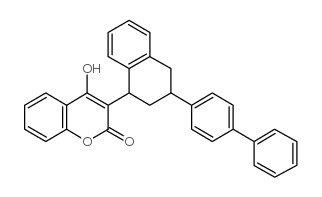Symptom-dependent taste aversion induced by an anticoagulant rodenticide in the brown rat (Rattus norvegicus).
P Smith, I R Inglis, D P Cowan, G M Kerins, D S Bull
Index: J. Comp. Psychol. 108(3) , 282-90, (1994)
Full Text: HTML
Abstract
In a series of 3 experiments with different experimental paradigms, feeding patterns of laboratory rats (Rattus norvegicus) were monitored in 2-choice feeding tests after intubation with a sublethal dose of an anticoagulant rodenticide. We report for the first time that contrary to accepted wisdom, anticoagulants can induce taste aversions. Furthermore, we report behavioral symptoms within the 1st day after dosing. Our data suggest that the taste aversion is induced through an inhibition of the vitamin K cycle and is transient, attenuating over the same period as the levels of vitamin K-dependent proteins return to normal. Because the taste aversion is expressed most strongly when symptoms are most pronounced and is not expressed after symptoms have disappeared, we term this novel form of control symptom-dependent taste aversion.
Related Compounds
| Structure | Name/CAS No. | Molecular Formula | Articles |
|---|---|---|---|
 |
Difenacoum
CAS:56073-07-5 |
C31H24O3 |
|
Fast targeted analysis of 132 acidic and neutral drugs and p...
2014-10-01 [Forensic Sci. Int. 243 , 35-43, (2014)] |
|
Use of two halogenated biphenyls as indicators of non-target...
1995-04-01 [Bull. Environ. Contam. Toxicol. 54(4) , 526-33, (1995)] |
|
Spatial and temporal analysis of second-generation anticoagu...
2003-01-01 [Environ. Pollut. 122(2) , 183-93, (2003)] |
|
High exposure rates of anticoagulant rodenticides in predato...
2012-10-01 [Arch. Environ. Contam. Toxicol. 63(3) , 437-44, (2012)] |
|
Concentrations of anticoagulant rodenticides in stoats Muste...
2011-05-15 [Sci. Total Environ. 409(12) , 2373-8, (2011)] |